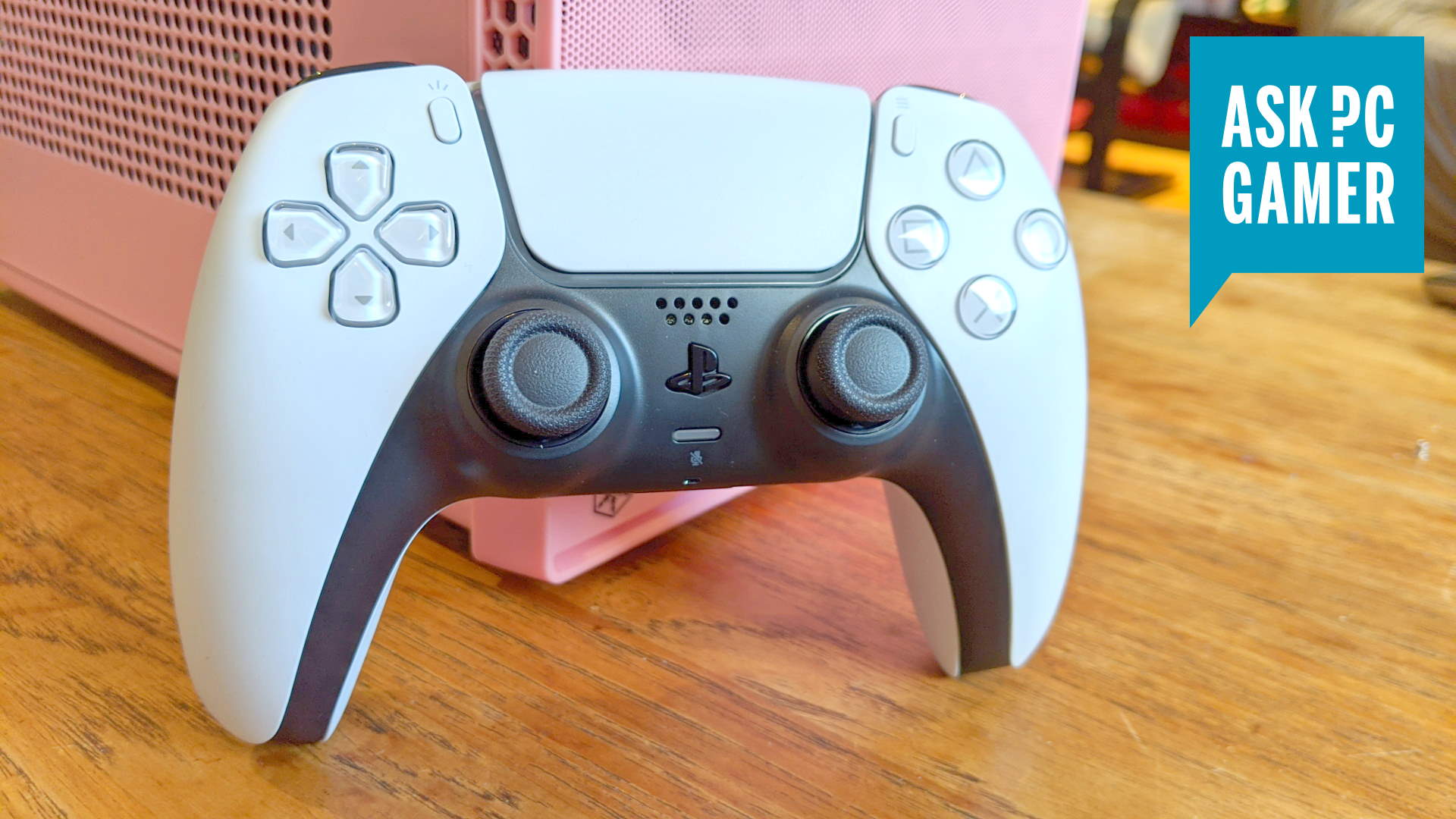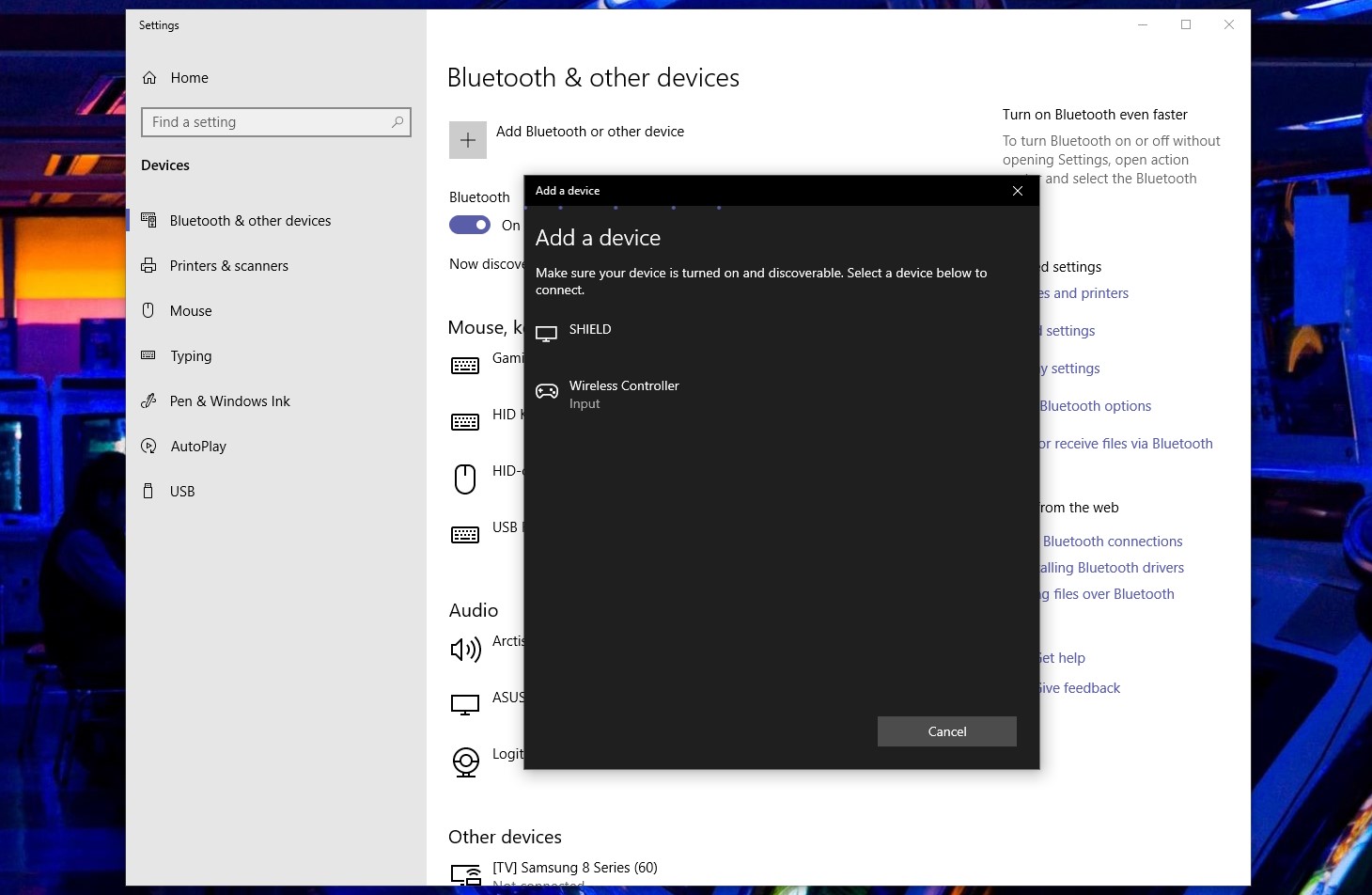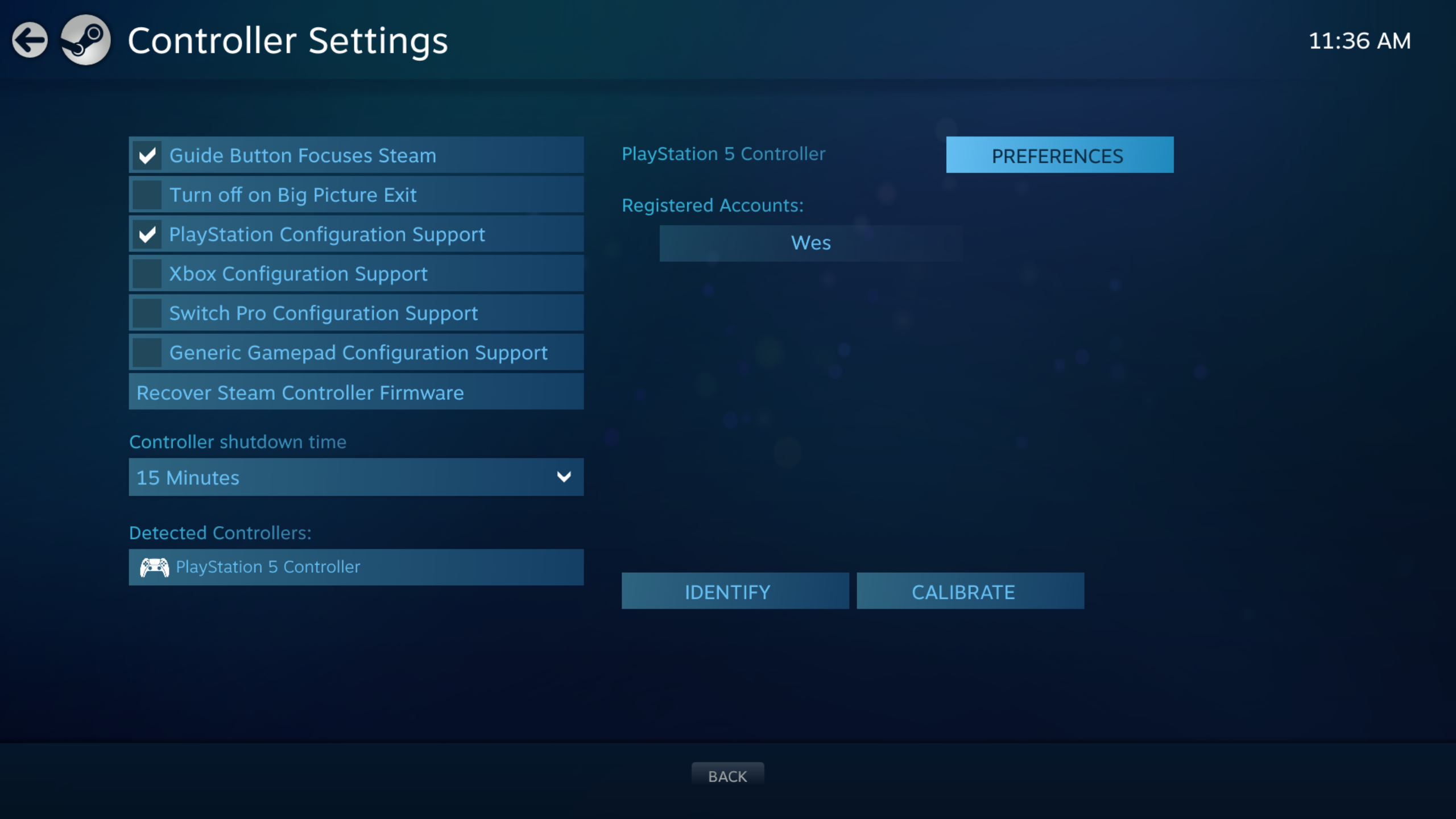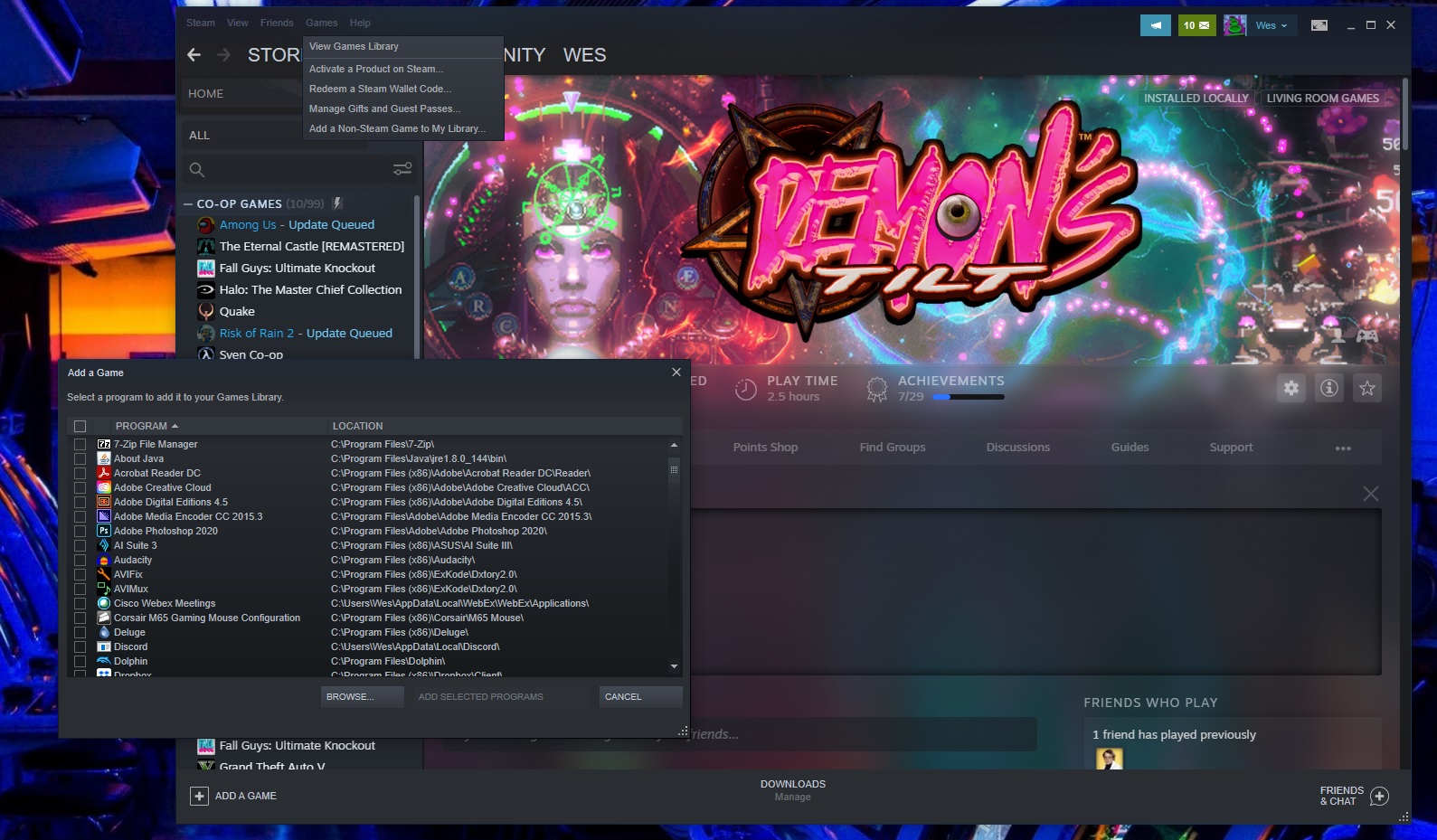How to use the PS5 controller on PC
Playing PC games with Sony's DualSense controller is a cinch. Here's how to do it.

Remember the launch of the PlayStation 5 and Xbox Series X? Both console makers were hyping up fancy new graphics and ray tracing capabiliaties, but the most-talked about new feature for either console might've been the PS5 controller's advanced triggers and haptics making you feel things. Though not many games have truly used the DualSense to its fullest capabilities, it's a great controller regardless.
It's also very easy to connect a PS5 controller to PC and use it in any games you want, not just Sony's own first-party ports.
Support for the DualSense gamepad's fancy haptic feedback and adaptive triggers is common in big budget PC games as of 2025. You can see a full list of games that work with the DualSense here, but here are just a few big names: Marvel Rivals, Call of Duty: Black Ops 6, and Star Wars Outlaws (and of course everything published by Sony).
We think the PS5 controller is one of the best PC controllers, though not just because of the adaptive triggers and fancy rumble. The excellent build quality, shape, and heck, even the USB-C port are all points in its favor. The fact that it supports Bluetooth also makes it an easy controller to use on PC with no added hardware.
Thanks to Steam Input, turning the DualSense pad into your everyday PC controller is pretty much as simple as plugging it in. The days of PlayStation pads being harder to use than Xbox ones are over.
If you want to play non-Steam games with the DualSense there are a couple more steps involved, but follow this step-by-step guide and you'll be up and running in just a couple minutes. Here's all you have to do to connect a PS5 controller to PC wirelessly or wired via USB.
PS5 controller on PC: Wired or Bluetooth
This part of the DualSense setup is easy peasy.
Keep up to date with the most important stories and the best deals, as picked by the PC Gamer team.
To connect the PS5 controller to your PC via USB, you're going to need a USB Type-C to USB-A cable for your PC (or a USB Type-C to Type-C cable if you happen to have a convenient port available).
While the PlayStation 5 console comes with one packed in, the DualSense sold by itself doesn't. Bummer! Get your hands on a cable, plug it in, and you're on your way. If you need to buy a cable, here's a two-pack from Anker for $10.
DualSense Bluetooth setup on PC
To use the DualSense via Bluetooth, you'll need a USB Bluetooth adapter (or a motherboard with Bluetooth built-in). To get connected, open the "Bluetooth & other devices" menu in Windows by pressing the Windows key and typing "Bluetooth." Then click "Add Bluetooth or other device" and the first item on the next menu that says "Bluetooth." Your PC will start searching for available devices.
On the DualSense, hold down the PlayStation logo button and the Share button (the small one to the left of the touchpad) until the LEDs around the touchpad begin flashing rapidly. Within a few seconds, a generic entry named "Wireless controller" should pop up in your Bluetooth devices list in Windows to connect to. Just click that to finish pairing.
If you need a Bluetooth adapter, you can get an up-to-date Bluetooth 5.0 model for about $20.

The DualSense will now be accessible in Windows with its DirectInput driver, which some games will recognize and let you rebind controls out of the box. But many PC games today are built around Microsoft's newer XInput driver for the Xbox controllers, so the DualSense will be a bit limited without some help.
That's where we use Steam.
PS5 controller on PC: Steam setup
How to configure Steam Input for the DualSense
Steam added basic support for the DualSense in 2020, and has continually improved the DualSense functionality since then. It's great! Using Steam is by far the easiest way to get your DualSense working on PC, even to play non-Steam games. I'll explain that in a moment.
To start, connect the DualSense to your PC via wire or Bluetooth as described above. Once you have it connected, open Steam and click Settings > Controller. From this part of the settings menu, you can now click "Desktop Configuration" to check out and customize the button layout.
You should see the DualSense is now recognized and listed as a PlayStation 5 controller. Steam will automatically configure the keybinds to mimic an Xbox controller layout; the Triangle button is Y, the Square button is X, etc.
You can choose Calibrate to tweak the joystick sensitivity, and Preferences to give the controller a name, enable/disable rumble, and configure the color and brightness of the LED strip around the touchpad.

One important tip here: make sure PlayStation Configuration Support is checked under "General Controller Settings" if you want to customize your DualSense controller's layout or gyro controls. With this button checked, you can press the PlayStation logo button on the controller in any Steam game to pull up Steam's controller configuration screen.

From the Desktop Configuration screen you can swap button bindings, change how the touchpad works (it can do separate left- and right-clicks) and also configure the gyroscope, if you want to use gyro aiming. You can also configure Action Sets and Action Layers to enable totally different button bindings and then switch to them on the fly in-game. For example, if you only wanted to use gyro controls while in a plane in GTA, you could create an Action Set for that and trigger it by pressing a specific key anytime you hop in a plane.
If you just want your DualSense to work like any ol' gamepad, though, you can leave this screen alone, no tweaking required.
PS5 controller on PC with non-Steam games
How to use the DualSense without Steam
If you want to use the DualSense in a game that you own on the Epic Games Store for example, there's a solution that should work for just about anything, even emulators. The easy way to do it: Bring Steam back into the picture.
Steam has an 'Add to library' feature for Windows executables that allows you to add other programs to your Steam library, and then make use of the Steam overlay.
As you can see in the image above, click the 'Games' menu in Steam, then choose the "Add a Non-Steam game to my library..." option to pull up a list of programs on your PC. In most cases, this should allow you to add a game and use a controller with Steam acting as the intermediary.

DS4Windows is another option
If you prefer to configure the DualSense for non-Steam games without adding those games to your Steam library, wonderful community tool DS4Windows added DualSense support. (Shouldn't it be DS5Windows? Hm, that doesn't sound quite as good).
Download DS4Windows and follow the simple getting started guide to install it.
To use DS4Windows, connect your controller to PC via USB or Bluetooth as explained above with DS4Windows open, and you should then be able to customize your keybinds, change the LED and monitor the controller's battery level. DS4Windows will let you use the DualSense in any PC game with Xbox controller support.
DualSense features: PC game support
So how many games actually support the DualSense features on PC, anyway? These days, quite a few!
In Windows the DualSense uses the generic DirectInput driver, which some games support out of the box. But most games today use Microsoft's newer XInput driver, which is where Steam Input really comes in handy. PCGamingWiki keeps a list of games that use the DualSense features, but below are some highlights that support both Adaptive Triggers and haptic feedback. It's far from an exhaustive list.
There is a catch: For many, Steam Input has to be disabled for the features to fully work properly. Steam Input supports advanced haptic feedback, but only if the game is designed to take advantage of the controller's features through Steam Input. So if you're playing any of the below and not feeling the triggers or delicate rumble do their thing, try disabling Steam Input.
- Grant Theft Auto 5 Enhanced
- Marvel Rivals
- Call of Duty: Black Ops 6
- Silent Hill 2
- God of War Ragnarok
- Final Fantasy 16
- Warhammer 40,000: Space Marine 2
- Star Wars Outlaws
- F1 24
- Ghost of Tsushima Director's Cut
- Animal Well
- Horizon Forbidden West
- Pacific Drive
- Helldivers 2
- Avatar: Frontiers of Pandora
- Alan Wake 2
- Star Wars Jedi: Survivor
- Hi-Fi Rush
- A Plague Tale: Requiem
- Death Stranding: Director's Cut
- Deathloop
- Cyberpunk 2077
- Apex Legends
- Genshin Impact

Wes has been covering games and hardware for more than 10 years, first at tech sites like The Wirecutter and Tested before joining the PC Gamer team in 2014. Wes plays a little bit of everything, but he'll always jump at the chance to cover emulation and Japanese games.
When he's not obsessively optimizing and re-optimizing a tangle of conveyor belts in Satisfactory (it's really becoming a problem), he's probably playing a 20-year-old Final Fantasy or some opaque ASCII roguelike. With a focus on writing and editing features, he seeks out personal stories and in-depth histories from the corners of PC gaming and its niche communities. 50% pizza by volume (deep dish, to be specific).
You must confirm your public display name before commenting
Please logout and then login again, you will then be prompted to enter your display name.


